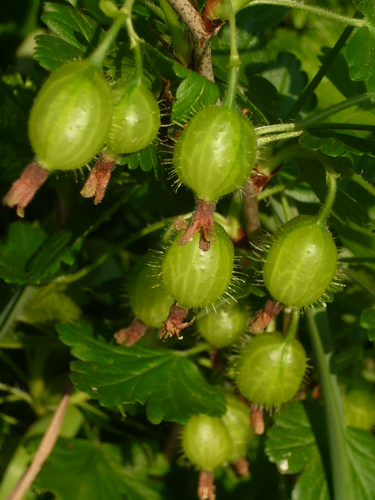Gooseberry History
One of the first fruits to be available for the kitchen and table each year, the gooseberry is an old stalwart. Rhubarb is earlier but is not a true fruit but a herb, still both are good in crumbles.
Gooseberries Since the Middle Ages
- Great show varieties have names redolent of our military past such as Roaring Lion, Hero of the Nile, Wellingtons Glory or my favourite Hampson’s Tantararara. Far better than the soppy names used for plants in the 21st century.
- Gooseberry bushes can easily live for 30-50 years and are one of the reasons for their longlived popularity
- Edward I had gooseberry bushes planted at Tower Bridge in 1275
- The young leaves were eaten and used as a diuretic according to 16th century Herbals.
- Gooseberry clubs were popular in England from the 19th century
- Gooseberries make jam and are grown for pectin for other fruit jams.
- Gooseberries thrive in most parts of the British Isles.
- The world record berry weighs 2.19oz and is from the Woodpecker variety
- The phrase “to play gooseberry” comes from the days when the fruit was a euphemism for the devil.
Gooseberry Shows
- Competitive gooseberry shows were wide spread but growing for size rather than flavour has fallen out of favour. A handful of shows still survive.
- Egton Bridge, on the North York Moors National Park, is the setting for the oldest surviving gooseberry show in the country.
- The show is held in August each year as it has been since 1800. It is organised by the Egton Bridge Old Gooseberry Society.
- Gooseberry shows were particularly popular over the North of England but have dwindled from about 170 to only 20.
- Show photos
Links and Sources
- Gooseberry Training and Growing Tips
- Forgotten Fruit by Christopher Stocks

